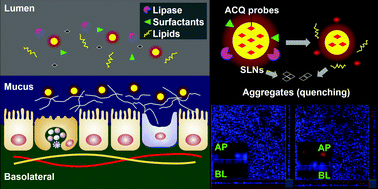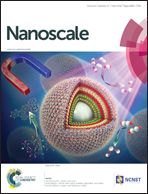Evidence does not support absorption of intact solid lipid nanoparticles via oral delivery†
Abstract
Whether and to what extent solid lipid nanoparticles (SLNs) can be absorbed integrally via oral delivery should be clarified because it is the basis for elucidation of absorption mechanisms. To address this topic, the in vivo fate of SLNs as well as their interaction with biomembranes is investigated using water-quenching fluorescent probes that can signal structural variations of lipid-based nanocarriers. Live imaging indicates prolonged retention of SLNs in the stomach, whereas in the intestine, SLNs can be digested quickly. No translocation of intact SLNs to other organs or tissues can be observed. The in situ perfusion study shows bioadhesion of both SLNs and simulated mixed micelles (SMMs) to intestinal mucus, but no evidence of penetration of integral nanocarriers. Both SLNs and SMMs exhibit significant cellular uptake, but fail to penetrate cell monolayers. Confocal laser scanning microscopy reveals that nanocarriers mainly concentrate on the surface of the monolayers, and no evidence of penetration of intact vehicles can be obtained. The mucous layer acts as a barrier to the penetration of both SLNs and SMMs. Both bile salt-decoration and SMM formulation help to strengthen the interaction with biomembranes. It is concluded that evidence does not support absorption of intact SLNs via oral delivery.


 Please wait while we load your content...
Please wait while we load your content...